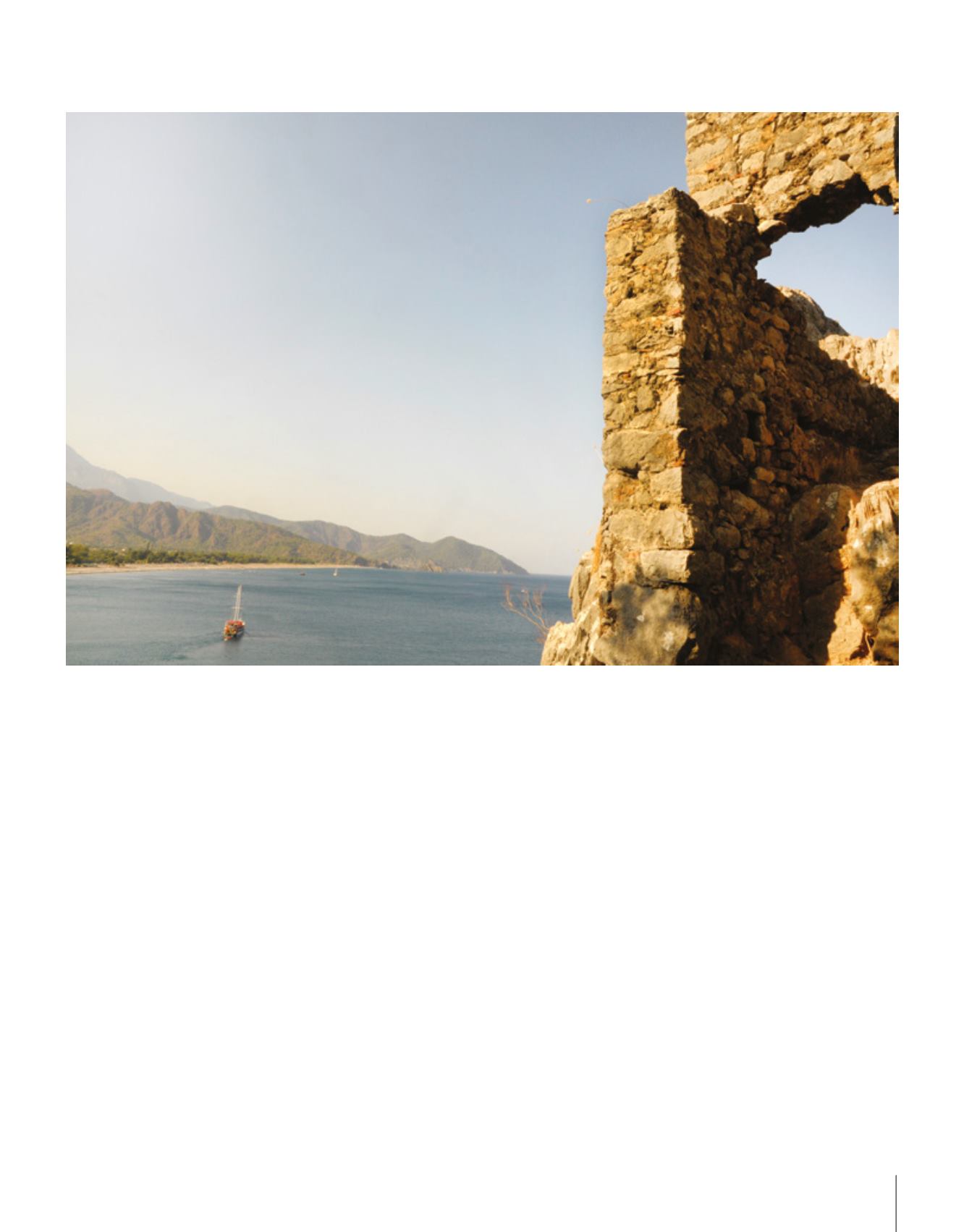
95
Yolu’nun önemli bir kısmı
Olimpos çevresinde bulunuyor.
Bu rotalar geçtiğimiz yıllarda
yapılan çalışmalarla kırmızı,
beyaz noktalarla işaretlenmiş
ve başlangıçları tabelalarla
gösterilmiş, bu nedenle
yolları bulmakta fazla
zorlanmıyorsunuz.
Zifiri karanlıkta kafanızı
kaldırdığınızda yıldızların
bu kadar yakın olduğuna
şahit olmak, içinizin yangını
bitmediyse, gece denize
girmenin ürperticiliği ile
ruhunuzun derinliklerine
yolculuk yapmak inanın
sizi üşütmeyecek. Yolunuz
Olimpos’tan da geçen Likya
Yolu’na düşüp tarihin peşinden
gitseniz de çok geçmeden geri
gelirsiniz. Çünkü Olimpos en
karmaşık duyguların en basit
anlatımıyla “çok güzel...”
Mitolojisi
“Fethiye’nin doğusu ile
Antalya’nın batısı arasında
kalan Bey Dağları Milli
Parkı’nda yer alan bölge M.Ö.
2. yüzyıl civarında Anadolu’nun
en önemli uygarlıklarından
olan Likya Birliği’ne ev sahipliği
yaptı. “Işık Ülkesi” olarak
da anılan Likya Birliği’nin
Akdeniz kıyısındaki en güçlü
kentlerinden birisi Olimpos’tu.
Musa Dağı ile Omurga Dağı
arasından akan Akdere’nin
iki kıyısında kurulmuş olan
kentin kalıntıları bölgenin
bereketli doğası tarafından
adeta saklanmış halde. M.Ö.
3.yüzyıl civarında kurulduğu
düşünülen kent, M.Ö.2.yüzyılda
Likya Birliği’ne dahil olur.
Kısa sürede birliğin en önemli
altı kentinden biri durumuna
gelen Olimpos’un tarihi bu
bölgeyi kendine üs tutan
Zeniketes adlı bir korsan
there is no hope from the wind
and the sunlight. The short lived
ship of Captain Eudemos sank
there after he left the light bearing
dawn, like a broken wave.” It was
taken by the Romans in the year
78 following Captain Eudemos.
Olympos was part of the Seljuk
land during the Crusades. It is
the water of the Akdere Creek
flowing fast that shows the
strength of Poseidon as we pass
by it on our way to the grace of
Eudemos... The creek dries up
during the summer months in our
day because most of the water
is kept for irrigation higher up.
Whereas it has been so strong
in the past that a wall had to be
built to prevent floods; it is said
that even ships could travel on
the clear waters of Akdere. There
are several more sarcophagi
apart from that of Eudemos.
However, the strongest structure
that has stood the test of time is
the entrance of a temple dating
back to the 2nd century A.C. It is
as if the Ionian style entryway has
stayed erect to give us an idea
of the grandeur of the temple.
The Country of Light Lykia was
accepted as the birth place of
the Sun God Apollon; hence the
chief god of Lykia Was Apollon.
However, there was another god
that was more important than
Apollon for the Olympos folk.
The blacksmith god Hephaistos
that could wield all kinds of metal
transforming them into grandiose
works of art. The reason for this is
the undying fire at Yanartaş that
has burned for centuries three
kilometers inside Çıral beach at
Yanardağ which is considered to
be one of the most mysterious
spots in Anatolia. It is told in
the text entitled “Periples” by
Pseudo, one of the geographers
of the ancient world, that there is
a temple built for Hephaistos in
this region the legend of which
is as interesting as Yanartaş. The
text that was written in 350 B.C.
tells of ‘the Hephaistos Temple
and an undying fire that kindled
on its own’ between the Adrasan
Harbor and the city of Phaselis.


